JICA Mozambique delegation visits FCM in Campinas, Brazil, to discuss cooperation in medical ...
Mozambique: Gas bubble deflates again; no fertiliser and no development – By Joseph Hanlon
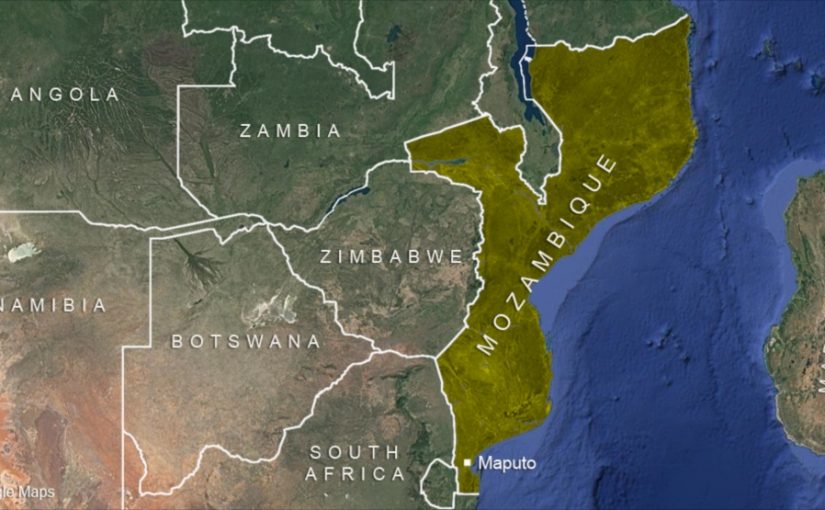
Gas bubble deflates further
Just as the Bank of Mozambique tabled a proposal for a sovereign wealth fund with a predicted $96 bn, the likelihood of a big gas bonanza declined further. ExxonMobil has delayed again any investment decision on Area 4 in Cabo Delgado, and its financial crisis makes it unlikely the gas will ever be produced there.
Meanwhile, none of the projects to use Mozambique’s share of the gas will go ahead. Zitamar (4 Nov) reports that Norwegian fertiliser giant Yara has abandoned plans to develop a fertiliser plant using Cabo Delgado gas (see article below). Zitamar also reports that neither Shell, which was planning to develop a gas-to-liquids project at the LNG site in Palma, nor Great Lakes Africa Energy, which was planning gas-fired power plant in Nacala, have moved their projects forward since they won a domestic gas project competition in 2016.
ExxonMobil’s Mozambique managing director, Jos Evens, told the Mozambique Gas Summit on 28 October that any decision “depends on how the market develops in the coming months and years” and it remains necessary to “assess the feasibility of the project.”
Exxon is losing huge amounts of money and its stock market value has fallen dramatically. Last month it agreed to start a $9 bn oil drilling project in Guyana which is now its top priority, at a time when oil demand has probably passed its peak. Natural gas prices have recovered somewhat from their low in May, but are not predicted to rise much more. Prices are so low that US shale gas is no longer profitable, and ExxonMobil it is likely to write down the value of its shale gas assets by $30 bn.
Dealing with huge losses, a massive shale gas write down, low gas prices, and a priority project in Guyana means Mozambique is a very low priority.
Fertiliser for Malawi but not Mozambique
Nacala port and railway have guaranteed to provide 600 wagons and associated locomotives to transport Malawi’s fertiliser imports of 80,000 tonnes over the next three months, Rádio Moçambique reported on 30 October. Malawi has 2/3 the population of Mozambique, yet it is importing through Mozambique three times as much fertiliser as Mozambique uses. In Malawi, more than half of small farmers use subsidised fertiliser; in Mozambique the figure is a tiny 4%. Therefore Malawian smallholders have double the maize productivity (2 t/ha) as Mozambicans (under 1 t/ha).
Yara: an opportunity thrown away, but only peasants lose out
Peasants do not use fertiliser in Mozambique because it is too expensive and the price at which they sell their maize does not cover the cost of the fertiliser – in contrast to Malawi and Zimbabwe. Mozambique has thrown away its opportunity to provide the fertiliser at reasonable cost and promote rural development.
Yara, the world’s second largest fertiliser company, works in 60 countries supporting local distribution systems, and is 36% Norwegian state owned. Natural gas is commonly used to produce nitrogen fertilisers. Partly because of Norway’s historic links with Mozambique, in 2015 Yara had a person full time in Maputo trying to negotiate a deal to use the government’s share of the physical gas to make fertiliser. Mozambique also has phosphate rock which is an important component of the most common compound fertiliser NPK – nitrogen (N), phosphorus (P), and Potassium (K). Yara was prepared to set up an entire fertiliser production and distribution system, at government set prices, if government provided enough gas at a low enough price. Government simply was not interested, but in 2016 agreed a much narrower proposal for Yara to produce nitrogen fertiliser for export. But in four years of negotiations government has refused to promise enough gas at a low enough price even for that, and now Yara has given up.
It would have been possible to use the gas both to create local industries and to support agriculture, as we reported five years ago. bit.ly/MozGasEng This would have brought substantial gains, and kick-started development. But in the end, Mozambique’s leaders only wanted to maximize the cash income that can be received by selling the gas directly, and had no interest in using gas for development. Yet again, $s took priority over jobs and peasant farmers.
Yara could have resolved a historic problem. Mozambique’s neighbours have a system of general trading shops which sell everything from cooking oil to seeds and fertiliser, and which buy crops. The system existed in colonial times; these shops were known as “cantinas”. Their Portuguese or Asian-origin owners abandoned them at independence, leaving the Mozambique or moving to run bigger businesses in the cities. But by 1980 these shops were being taken over by local Mozambicans. Then in the 1981-92 war, Renamo targeted and destroyed most rural shops.
With the end of the war came structural adjustment and donors promoted a “free market” of small ambulatory traders and market stalls, and did not allow support for the rebuilding of the shop system. Traders and stall holders pay no taxes and are not regulated, so formal shops cannot compete. But the traders sell only a few items, and do not sell heavy seasonal goods like fertiliser; some traders began to buy crops, only at very low prices. So, unlike neighbouring counties, Mozambique never rebuilt the rural general shop system.
When Malawi introduced its fertiliser subsidy, donors led by DfID objected and threated to cut off aid. But Malawi persevered, and when maize exports more than paid for fertiliser imports, donors quietly dropped their objections. But the Mozambican agriculture minister at the time told me the government was not prepared to challenge donors in that way.
Yara offered a way out that would have been donor-acceptable. But Frelimo wanted $s rather than development.
Ghana has gone the other direction. Ghana is using its oil and gas money to invest, particularly in agriculture, as a way of creating jobs. Ghana opened a new fertiliser factory in January. Increasing domestic fertilizer production will increase fertiliser use by 50% in the next five years, according to Minister of Food and Agriculture, Owusua Afriyie Akoto on 3 November. He added that Ghana is on the path to becoming the breadbasket for West Africa.
Ghana announced last year that it would use some of its gas for the increased fertiliser production. Yara is active in Ghana, where it collaborates with government and local research institutes, and promotes farmer groups.
Local content demands blocked by gas companies
Under pressure from the gas companies, in August 2019 the government shelved a proposed Local Content Bill, according to CDD (Centre for Democracy and Development, 20 Oct). “Without a law on local content, Mozambique has no legal arguments to impose preference on the acquisition of local goods and services, the hiring of local labour and the participation of private and public individuals and legal persons in large-scale projects. All that exist in scattered legislation is good intentions.”
The draft law gives preference to national content, people and companies, but more importantly promotes capacity building of Mozambican companies and citizens and expects gas companies to support the establishment of strategic business partnerships between national and foreign suppliers. It also provides a wide list of goods and services reserved for local suppliers.
At present, without a local content law, the gas companies publish requests for tenders which they proudly say are open to Mozambican companies, but which in fact local companies do not have the capacity to apply for. A local content law would force the gas companies to adapt their procurement processes for things like food and drink to include what can be supplied locally, and to work in advance to help local companies prepare to tender.
“Lobbying that hinders the Local Content Bill in Mozambique” https://cddmoz.org/wp-content/uploads/2020/07/Sovereign-wealth-fund-to-stabilize-the-economy-and-catalyze-good-governance-and-fiscal-transparency.pdf
CCD (26 Oct) also published a report on Angola’s new local content law, in Portuguese only: https://cddmoz.org/angola-ja-publicou-lei-de-conteudo-local-e-mocambique-de-que-esta-a-espera-2/
Sovereign Wealth Fund
The Bank of Mozambique proposal for a Sovereign Wealth Fund, in Portuguese, is on http://bit.ly/Moz-SWF
Civil society organisations have published their views on the proposal, in English:
CIP (the Public Integrity Centre) today (8 Nov) published a detailed “Analysis of the Draft Model of a Sovereign Wealth Fund presented by Central Bank of Mozambique”, in English, on: https://cipmoz.org/wp-content/uploads/2020/11/Sovereign-Wealth-Fund-.pdf
CDD published its comment, in English, on https://cddmoz.org/wp-content/uploads/2020/07/Sovereign-wealth-fund-to-stabilize-the-economy-and-catalyze-good-governance-and-fiscal-transparency.pdf
The Cabo Delgado war Mocimboa da Praia still occupied by insurgents, admits FDS
The port and airport of Mocimboa da Praia are still occupied by insurgents and have been since August, the defence forces (FDS) admitted in evidence to a 1st Parliamentary Commission on its recent visit to Cabo Delgado. Insurgents are expanding their control of villages around Mocimboa da Praia. Electricity remains cut to the northern districts because technicians have been unable to repair the substation at Awasse, damaged by the insurgents some months ago. The commission in its report calls the situation “serious”. (MediaFax, Zitamar, Lusa 5 Nov)
We advise readers to subscribe to the weekly CaboLigado – free, published on Tuesday, and in English – which gives the best reporting on the war. Subscribe on https://bit.ly/CaboSub and go to the bottom of the form and tick Cabo Ligado. We attach the last report. We no longer publish detailed war reports – CaboLigado is much better.
However, the map is a catch-up on the war.

+ The area to the right of white dashed line is controlled by insurgents.
+ The purple line thought Macomia to Mocimboa da Praia is the N380, the only paved road to the north, which has been closed for months.
+ The green line is the only remaining road open, a dirt road from Montepuez to Mueda to the gas project at Palma and Afungi. Regular attacks near Pundanhar (the upper star on the map) means vehicles are often prevented from travelling. The road is dirt and will become impassable in late December after the start of the rains, so there is pressure on the FDS to reopen the N380.
+ The other red star is Muidumbe district, which has seen heavy fighting recently.
+ Refugees continue to flee in large number, many by boat down the coast to Pemba.
435,000 refugees
The war has displaced more than 435,000 people, Prime Minister Carlos Agostinho do Rosario told parliament on 28 October. The largest number flee to Pemba by boat, with hundreds per day arriving on the beach next to Paquitequete neighbourhood. For example, eight boats carrying 335 displaced people arrived at the Paquitequete beach on Friday (6 Nov).
At least 40 refugees drowned when an overloaded boat hit rocks and sank on 1 November between Ibo and Matama islands. Other boats saved 32 people.
Muidumbe heavy fighting
Insurgents took control of much of Muidumbe district, the star on the map between Macomia and Mueda, from 31 October, according to Pinnacle News. At least 40 people have been decapitated, many on a football field in Muatide village.
Intelyse (5 Nov) reported civilians fleeing Mueda town and Macomia town, with people hiding in bushes or in outlying villages. People expect battles between FDS and insurgents in both towns.
Militias from Mueda and Muidumbe districts, led by veterans of the independence war, have been taking an increasing part in the war in Muidumbe, but also leading to confusion. Pinnacle News reports that a group of solders was going to join the battle in Muidumbe, but 30 km from Mueda were confronted by a militia led by a veteran known as “old Almasse”. Insurgents are increasingly wearing government military uniforms and driving government vehicles taken from raids on military bases. The militia thought the other group were insurgents, and in the shoot-out, two old independence fighters died.
Tanzania and Pundanhar
Pundanhar was occupied twice and the road from Mueda to Palma closed, around 28 October and 1 November. In both cases insurgents were forced out by military with air support from DAG mercenaries, with significant deaths on both sides. Insurgents ambushed government troops nearby.
Just 20 Km north Pundanhar is the Rovuma River which is the border with Tanzania. Up to 300 insurgents have attacked nearby Tanzanian villages. Tanzanian forces fired rockets into Mozambique. And Tanzania has repatriated 800 Mozambican seeking refuge across the river.
By Joseph Hanlon



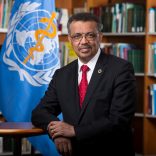


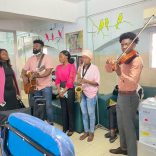
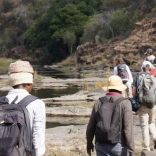

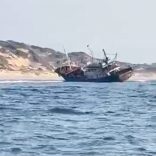
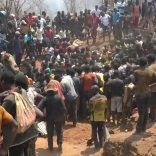


Leave a Reply
Be the First to Comment!
You must be logged in to post a comment.
You must be logged in to post a comment.